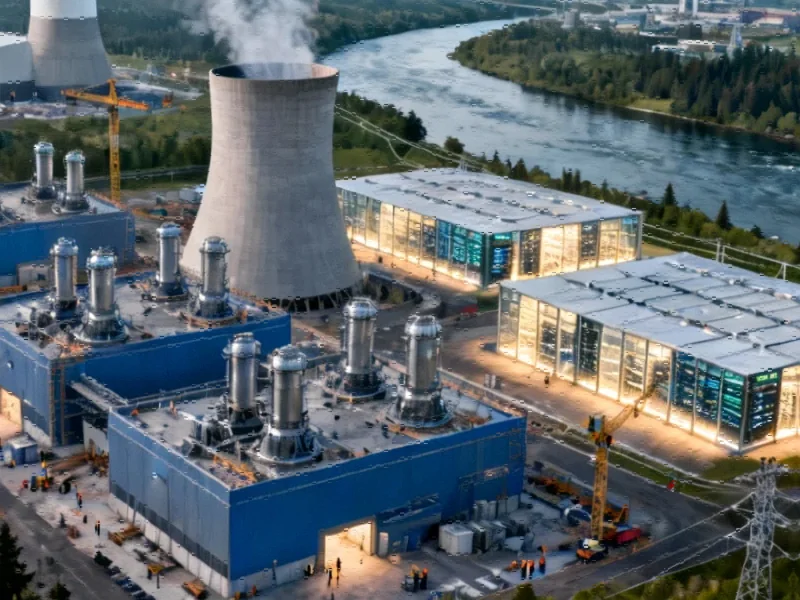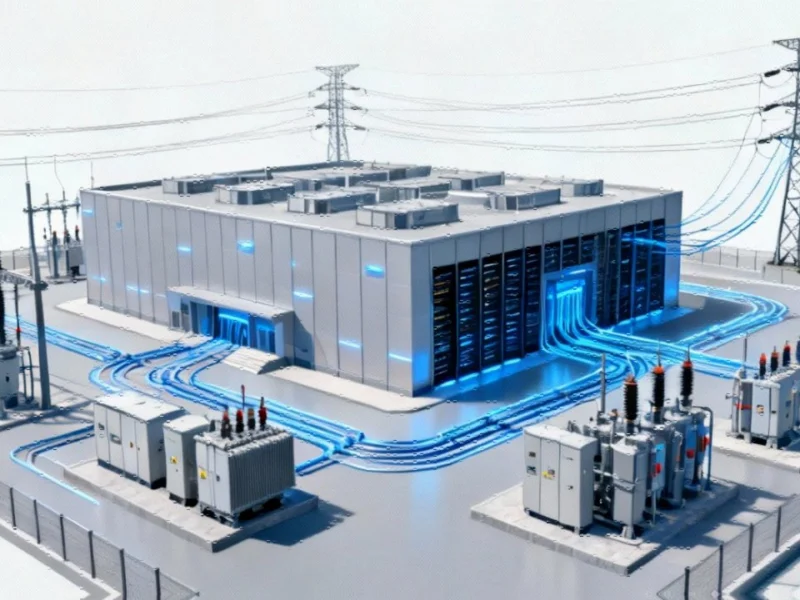Tech Giant’s Nuclear Ambition Scales Up
Amazon has significantly expanded plans for its upcoming nuclear facility in Washington state, with reports indicating the Cascade Advanced Energy Facility will now generate three times more electricity than originally proposed. According to the company’s announcement, the modular nuclear plant will provide clean power specifically for Amazon Web Services data centers and generative AI clusters, whose energy requirements are growing at an unprecedented rate.
The escalating power demands of artificial intelligence systems have created what analysts suggest is an emerging energy crisis. With insufficient electricity generation capacity to sustain AI growth while maintaining existing power grids, major technology companies are seeking alternative energy solutions. Amazon’s nuclear initiative represents one of the most substantial corporate responses to this challenge.
Project Specifications and Timeline
The Cascade facility will be constructed through a partnership between Amazon and Energy Northwest, located near the existing Columbia Generating Station in Richland, Washington. Sources indicate the project will unfold in three phases, each generating 320 megawatts from four next-generation 80-megawatt high-temperature gas-cooled reactors.
Once fully operational, the 12 reactors will produce up to 960 megawatts of electricity – enough to power hundreds of thousands of homes. Construction is scheduled to begin “by the end of this decade,” with electricity generation expected to commence “in the 2030s.” The project will reportedly create more than 1,000 temporary construction jobs and over 100 permanent positions.
Small Modular Reactor Technology
Energy Northwest is designing the facility using small modular reactor (SMR) technology, which enables faster deployment and reduced construction costs compared to traditional nuclear plants. The compact design means the entire facility’s footprint will be equal to just a few city blocks – significantly smaller than conventional nuclear power plants that can occupy over a square mile for similar output.
According to reports, Amazon believes SMR technology represents the future of clean energy infrastructure for data centers. The company previously invested in SMR development startup X-Energy, with ambitions to add more than 5 GW of clean electricity to the US grid by 2039 through reactor deployments.
Addressing Environmental and Community Concerns
Amazon has faced scrutiny from environmental groups, academics, and Native American tribes regarding safety and ecological impacts. The company states that its scalable nuclear approach will help reduce carbon emissions while generating jobs and contributing to the local economy. Analysts suggest the location near the Cascade Range was chosen strategically to leverage existing infrastructure while minimizing environmental disruption.
Amazon’s official statement emphasizes that the nuclear facility will protect the region’s ecology while providing reliable power for its expanding artificial intelligence operations. The company position is that nuclear energy offers the most viable solution for meeting massive power demands without increasing fossil fuel dependence.
Brobroader Nuclear Strategy
Amazon’s nuclear ambitions extend beyond the Washington facility. In August 2025, Amazon and X-energy signed agreements with South Korean power utilities Doosan Enerbility and Korea Hydro & Nuclear Power Company to deploy additional SMRs across the United States. The tech giant has also inked a deal with Talen Energy in Pennsylvania to construct a data center adjacent to existing nuclear facilities for direct access to carbon-free power.
These developments reflect a growing trend where major technology companies are taking energy production into their own hands. As industry developments continue to evolve, the intersection of technology and energy infrastructure is becoming increasingly significant. Recent market trends show substantial investment flowing toward alternative energy solutions for data centers.
The global technology sector continues to navigate complex industry developments while balancing growth with sustainability. Meanwhile, related innovations in energy efficiency remain critical to supporting the computational demands of advanced AI systems. The successful implementation of Amazon’s nuclear strategy could establish a blueprint for other companies facing similar recent technology challenges. As these market trends develop, the energy landscape for technology infrastructure appears poised for significant transformation.
This article aggregates information from publicly available sources. All trademarks and copyrights belong to their respective owners.
Note: Featured image is for illustrative purposes only and does not represent any specific product, service, or entity mentioned in this article.



